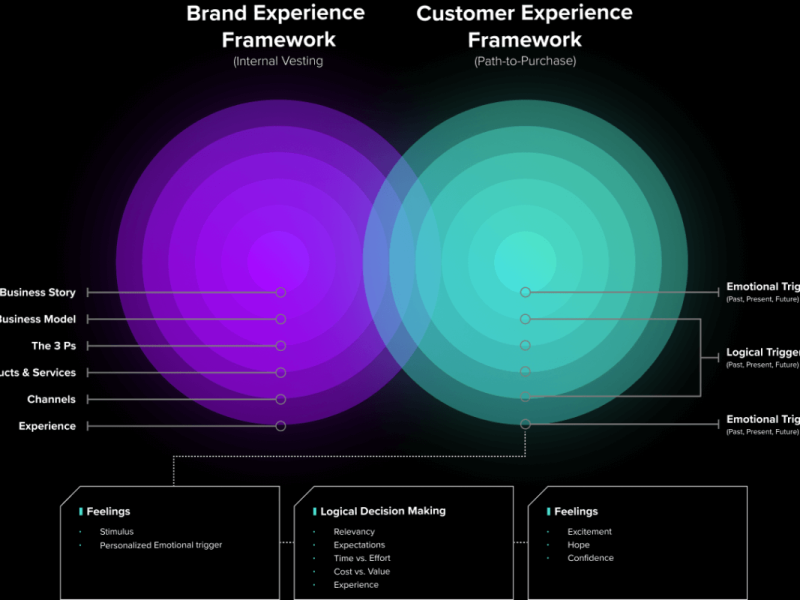A Comprehensive Guide to CX
Customer Experience, often abbreviated as CX, is the holistic perception customers have of their interactions with a company.
It encompasses every touchpoint—from the moment they become aware of a brand, through the purchasing process, and even post-purchase engagements.
A positive customer experience fosters satisfaction, loyalty, and advocacy, making it a vital component for businesses striving to thrive in today’s competitive marketplace.
Why Customer Experience Matters
In the digital age, exceptional products and services are no longer sufficient to secure customer loyalty. Companies need to create experiences that are memorable, seamless, and tailored to customer needs. A well-designed customer experience translates to:
- Higher Customer Retention: Satisfied customers are more likely to return for repeat purchases.
- Increased Word-of-Mouth Referrals: Happy customers share their experiences, bringing in new leads.
- Improved Brand Reputation: Positive online reviews and ratings elevate trust and credibility.
- Enhanced Revenue Growth: Loyal customers often spend more and have higher lifetime value.
The Elements of a Great Customer Experience
- Understanding Customer Needs To create a meaningful experience, businesses must first understand their customers’ needs, expectations, and pain points. Tools like surveys, focus groups, and analytics platforms can provide invaluable insights.
- Consistent Touchpoints Consistency is critical. Whether customers interact with a company online, in-store, or through customer service, their experience should feel seamless and unified.
- Proactive Support Anticipating customer needs before they arise, such as sending timely reminders or providing troubleshooting tips, can prevent issues and build trust.
- Personalization Tailored recommendations and personalized communication show customers that a brand values their individuality, enhancing their overall satisfaction.
- Efficient Problem Resolution Quick and effective handling of complaints and queries fosters goodwill and demonstrates commitment to customer satisfaction.
The Stages of Customer Experience
- Awareness Customers first encounter a brand through advertisements, social media, or word of mouth. Creating a strong first impression is essential to capturing interest.
- Research At this stage, customers seek information about the product or service. An intuitive website, informative content, and transparent pricing play pivotal roles here.
- Consideration Customers evaluate their options, comparing features, benefits, and costs. Providing clear value propositions and addressing potential concerns can sway their decision.
- Purchase This critical stage involves completing a transaction. Ensuring a frictionless purchasing process—whether online or in-store—is crucial.
- Delivery Timely and accurate delivery of products or services leaves a lasting impression. Clear communication during this phase builds trust.
- Use As customers engage with the product or service, they form opinions based on quality and usability. Offering support during this phase helps address any issues promptly.
- Loyalty A positive experience fosters repeat business. Loyalty programs, exclusive offers, and consistent quality encourage customers to return.
- Advocacy Loyal customers often become brand advocates, recommending the company to friends, family, and peers. Encouraging reviews and referrals can amplify this effect.
Designing a Winning Customer Experience
1. Identify Your Target Audience
Understand who your customers are and what drives their decisions. Utilize demographic data, customer feedback, and behavioral insights to paint a clear picture of your audience.
2. Map the Customer Journey
Outline all potential touchpoints in the customer journey, from initial awareness to post-purchase interactions. This helps identify areas for improvement.
3. Address Pain Points
Analyze the customer journey to pinpoint friction points. Whether it’s a confusing checkout process or slow response times, addressing these issues is key to improving CX.
4. Develop a Customer Experience Strategy
Create a comprehensive plan outlining specific initiatives to enhance CX. This may involve revamping your website, training staff, or launching a new loyalty program.
5. Implement and Test
Roll out your strategy and gather feedback to measure its effectiveness. A/B testing, customer surveys, and analytics can provide valuable insights.
6. Continuously Improve
Customer expectations evolve, so CX strategies must too. Regularly review performance metrics and adapt to changing customer needs.
Examples of Exceptional Customer Experience
- Efficient Problem Resolution Brands like Zappos are renowned for their stellar customer service, offering quick solutions and often going above and beyond to delight customers.
- Personalized Recommendations Netflix’s algorithm, which tailors recommendations based on viewing history, exemplifies how personalization can enhance user experience.
- Proactive Support Apple provides regular software updates and troubleshooting resources, ensuring customers enjoy a seamless experience with their products.
- Consistency Across Channels Starbucks ensures a consistent experience whether customers visit a store, use the mobile app, or engage online, building strong brand loyalty.
The Role of Digital in Customer Experience
In today’s hyper-connected world, the digital customer experience has become paramount. Key considerations include:
- Website Usability: Ensure your website is mobile-friendly, fast, and easy to navigate.
- Online Reputation Management: Respond to reviews and engage with customers on social media to build trust.
- Omnichannel Integration: Customers expect a unified experience across channels—whether they’re shopping online, in-store, or via an app.
Final Thoughts
Customer experience is the cornerstone of modern business success. By understanding customer needs, delivering consistent and personalized interactions, and continually optimizing the journey, companies can foster long-term loyalty and differentiate themselves in the marketplace.
Investing in customer experience isn’t just a trend; it’s a strategic imperative that drives growth, retention, and brand advocacy. Start focusing on CX today, and your business will reap the rewards for years to come.
For further insights and examples, check out these resources:
- Customer Experience: What It Is and Why It’s Important
- Forrester’s 2024 US Customer Experience Index
- Zendesk’s: Five trends shaping customer expectations
- McKinsey: What is CX?
Finally, there is interesting information you could read to learn more about this topic:


